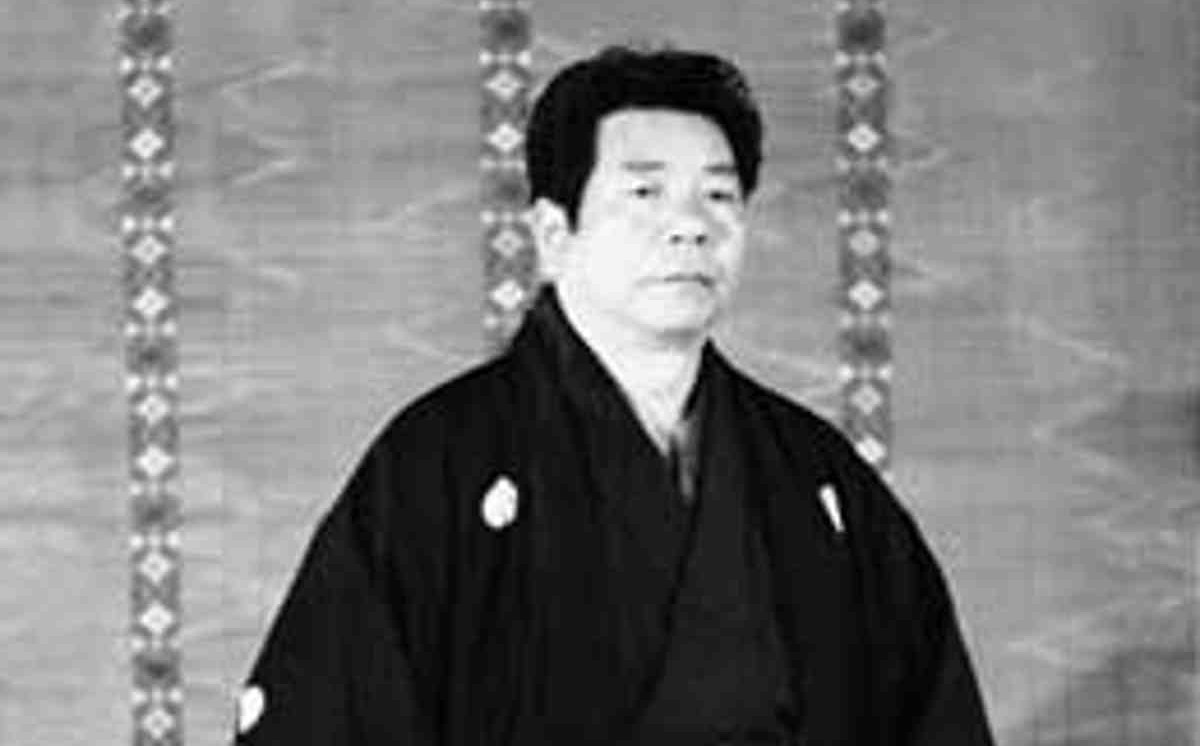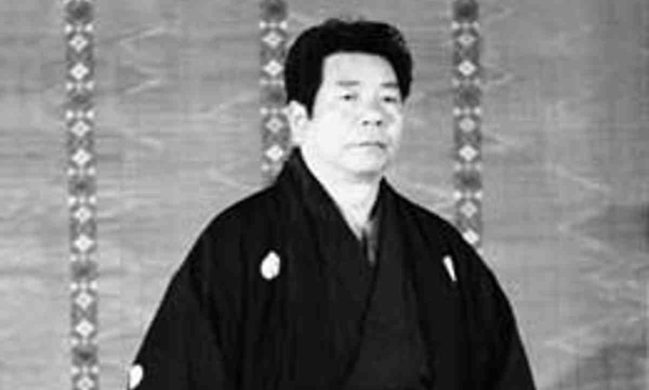Introduction
Now that I have your attention with the controversial headline… 🙂 Our dojo practices Iwama Style Aikido. Practioners of Iwama-Ryu Aikido are sometimes perceived as having a “my way is the right way” approach to Aikido. This honestly couldn’t be farther from the truth. We’ve decided to take this opportunity to talk a little bit about Iwama Style, or Traditional, Aikido and our dojo’s approach to teaching. Hopefully this post will help potential students understand a bit more about both Iwama Style Aikido and the way our dojo approaches Aikido practice.

“O-Sensei would say: “That’s not the way. Every little detail should be correct. Otherwise, it isn’t a technique. See, like this… like that!” I was very lucky O-Sensei taught me thoroughly in detail, and I’m following his example.”
Morihiro Saito Shihan
9th DanHistorical Background
Before discussing Iwama Style teaching methods and the motivations behind them, I’d like to set the stage by summarizing some history. My hope is that this will add some helpful context to the discussion that follows.
O-Sensei’s Time In Iwama
Morihei Ueshiba O-Sensei established the Kobukan Dojo in April 1931 in the Ushigomi neighborhood of the Shinjuku district in Tokyo. During his time in Tokyo, O-Sensei taught “Aiki-budo”. In 1942 O-Sensei retired to Iwama, a small farming village located abotu 100 km NE of Tokyo. He appointed his son Kisshomaru Ueshiba to manage the Kobukan Dojo. In 1945, O-Sensei completed work on the “Aiki Shuren Dojo”, later known as the Iwama Dojo. It was at the Iwama Dojo that O-Sensei created modern Aikido.
Morihiro Saito Sensei
Morihiro Saito, an 18 year old young man, first met Morihei Ueshiba O-Sensei in 1946, about a year after the Aiki Shuren Dojo opened. Young Saito had just moved to Iwama. For the first year of Saito’s training, because he couldn’t afford to officially join the dojo, he agreed to only take ukemi. He regularly took ukemi for uchideshi like Kisshomaru Ueshiba, Koichi Tohei, and Tadashi Abe.
Saito Sensei, in his early years at Iwama, was employed by the Japan National Railways. He worked a 24-hour on, 24-hour off shift schedule, that allowed him to both train regularly and assist the founder in his daily life. Saito Sensei trained with O-Sensei continuously for 23 years until the Founder passed away in 1969. Just prior to the Founder’s death, Saito Sensei was appointed Dojo-Cho of the Iwama Dojo, and Guardian of the Aiki Jinja.
“I saw nothing but the real thing for 23 years. I don’t really know anything other than the Iwama style taught by O-Sensei. My role is to preserve these teachings. That’s the main thing.”
Morihiro Saito Shihan
9th DanMorihiro Saito Sensei devoted his life to organizing and preserving the Aikido that was passed to him over the course of almost a quarter of a century of direct daily practice with O-Sensei.
The Iwama Teaching Methodology
Iwama Style Aikido stands out for both its focus on technical aspects of Aikido, and for it’s robust weapons curriculum. In addition, we teach and practice the application of atemi-waza (当て身技 Translation: body-striking techniques) and we regularly employ kiai (気合 Translation: Spirit Shout).
Levels of Practice
I wrote an earlier post on the levels of practice typically used to teach Iwama Style Aikido.
“O-Sensei taught us two, three or four levels of techniques. He would begin with kata, then one level after another, and finally, it became just so… and now I teach in exactly the same way. Because O-Sensei taught us systematically I’ve got to teach in an organized way, too. Generally speaking, O-Sensei would make remarks like the following: “Everything is one. Everything is the same.” He taught us in that way. I’m just following his example.”
Morihiro Saito Sensei
9th DanMy understanding of the four “levels of techniques” Saito Sensei refers to are:
- Kihon (basic/foundation) or Kotai (static) practice
- Yawarakai/Jutai (soft/flowing) practice
- Ki-No-Nagare/Ryutai (Lit: “Flowing (Body)”)
- Kitai (“Flow of Ki”) practice
In my experience, most Iwama Style dojos practice using a three level framework. These are usually “Kihon”, “Yawarakai”, and “Ki-No-Nagare”. The highest level of practice, Kitai, is achieved after many years of hard training and intensive study.
Taijutsu (Open Hand Arts)
Saito Sensei indicated, while lecturing at a seminar, that there are more than 600 kihon waza, or “Foundation Techniques”. All Iwama Style Aikido students begin with the study of Kihon Waza. Each technique is learned carefully with a focus on technical precision. Students are told exactly why they are doing what they’re doing during the execution of a given technique. Uke gives a strong, martially effective, attack. The Kihon-waza also include Suwari-waza (Lit: Seated Techniques) and Hanmi-Handachi-waza (Lit: Half-body or Half-standing) techniques.
As students advance, they begin practicing Yawarakai (柔らかい – Lit: Soft). Movements become more fluid/flowing and managing/blending with uke’s attack is emphasized. We learn, in conjunction with weapons practice, how to manage Maai (間合い – Lit: Combative Distance), how to look for openings to apply atemi, and how to maintain a strong structure while moving. Ukes focus on developing their own skills. These skills include both the development of safe and practical ukemi and the development of effective attacks.
Eventually, students move toward Ki-No-Nagare practice. Continued practice moves away from a sole focus on Kihon waza. Students are introduced to Kaeshi-waza (reversals), Henka-Waza (adapted techniques in response to evolving conflict), and Oyo-Waza (Applied Technique). Students are also taught to recognize the existence of “Ara-waza” (Lit: Coarse Techniques), and are taught to appreciate the sometimes life-long implications of applying Ara-waza.
In addition, Saito Sensei emphasized returning to the Kihon waza constantly, regardless of where you are in your Aikido career.
Bukiwaza (Weapons Techniques)
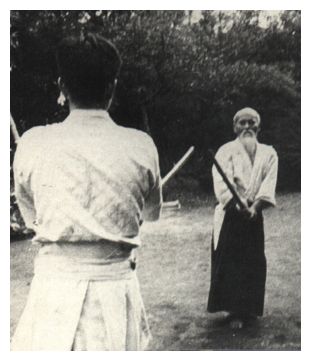
Iwama Style Aikido dojos teach a comprehensive weapons curriculum. Students begin with learning Suburi and progress to assembling the Suburi into solo Kata. When students are comfortable with weapons, they begin paired “awase” training. Awase training helps teach distance and timing associated with paired practice. As students advance, they progress to paired practice (with both Ken and Jo). Weapons training also includes significant Jo-Nage/Jo-Dori/Tachi-Dori/Tanken-Dori practice.
Riai (Harmony of Principles)
Iwama Style Aikido practitioners don’t view weapons practice as a “supplement”, or something interesting to do every now and then. We view Aiki-Ken and Aiki-Jo as an inseparable component of Aikido training. The word Riai translates to “harmony of principles”. The purpose of our weapons training is to inform Taijutsu practice (and vice versa). Aikido Taijutsu, Aiki-ken and Aiki-jo are not components of Aikido practice. We believe that they ARE Aikido practice. The three are inseparable.
“When O-Sensei explained Aikido he always said that taijutsu (body techniques) and ken and jo techniques were all the same. He always started out his explanation of Aikido using the ken. Although he didn’t use a one-two-three method, he always taught us patiently and explained in detail what we should do.”
Morihiro Saito Shihan
9th DanPutting it all Together…
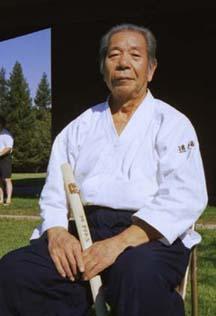
Morihiro Saito Sensei spent 23 years practicing directly with O-Sensei. He wasn’t just a guy attending class a couple times a week. Most days, he was with O-Sensei all day long. Saito Sensei continues to be well known as an exemplary Aikido technician. He spent his entire life organizing and codifying what he learned directly from O-Sensei, and generously passing it along to his students. He felt strongly that his life should be dedicated to the preservation of Morihei Ueshiba O-Sensei’s Aikido as he learned it directly from the founder. All available evidence (Books: “Budo Renshu”, “Budo” in addition to videos and photographs) indicates that Saito Sensei effectively preserved what he’d been taught! Stanley Pranin, founder of Aikido Journal and respected Aikido historian, tells a wonderful story about the discovery of O-Sensei’s 1938 technical manual “Budo” and the discussions that followed with Saito Sensei.
“Many shihan create new techniques and I think this is a wonderful thing, but after analyzing these techniques I am still convinced no one can surpass O-Sensei. I think it is best to follow the forms he left us.”
Morihiro Saito Shihan
9th DanSerious students of Iwama Style Aikido have chosen a path that attempts to continue to preserve what we view as both O-Sensei’s legacy, and Morihiro Saito Sensei’s life’s work. In many cases we view ourselves as historians. I believe that the path to understanding O-Sensei’s legacy is through hard study of what he left behind. There is a good bit of evidence to indicate that Saito Sensei felt this way as well.
Our Dojo… What Do We Teach?
I am privileged to have had the opportunity to practice with both students and, in many cases, leading exponents of almost every major style of Aikido. I’d estimate conservatively that I’ve attended close to 100 seminars, representing every major style of Aikido, since I started my Aikido career in 1995.
I also consider myself very lucky to have spent almost 20 years of my Aikido career living and practicing in Arlington, Virginia. My location provided an opportunity to practice Iwama Style Aikido nearly every day at Aikido of Arlington. I also had, within walking/driving distance, some really fantastic examples of most of the more popular styles of Aikido. Attendance at cross-style seminars, and cross training with other styles of Aikido, has always been encouraged by every one of my teachers.
Our Evolving Skill Tree
Around the time of our first anniversary, in mid-2019, I began development on additions to our curriculum in the form of a “skill tree”. In addition to the significant legacy that Saito Sensei left behind, there is a set of skills that I believe are necessary to support serious Aikido study. In addition to Kyu-Dan rank structure, where students demonstrate specific Aikido techniques, we offer opportunities to develop and demonstrate skills relative to our skill tree. Our skill tree incorporates both traditional Aikido training, and is also evolving to address some of the more relevant criticisms of the art. We work to incorporate some aspects of other martial arts (e.g. adding additional Ne-Waza, or ground work), and we look at the ways that other arts approach concepts like distance and timing.
Views on Aikido Practice
Our dojo practices Iwama Style, or Traditional, Aikido. Aikido is a martial art. The path that O-Sensei laid down is the path I study. I also feel that the best way for me to explore this path is through a practice that establishes a strong foundation. Saito Sensei laid this foundation. Given the time that Saito Sensei spent at the Founder’s side, we believe that this is the right path to achieve our training goals.
Conclusion
The focus of this post has been on addressing the perception that Iwama stylists have a “my way or the highway” approach to Aikido. We believe that Aikido is an amazing martial art. Tangible benefits result from regular and robust practice. We focus on the development of strong technically proficient Aikidoka. We recognize and support other legitimate approaches to teaching Aikido. Speaking for myself, I’ve spent 23 years studying with anyone that’ll throw me.
My Way or the Highway?
Frankly, if I see a technique that I feel is useful, I’ll steal it and teach it to my students as Oyo-waza (Lit: Applied technique). The same holds true for teaching methods. If I see something that I think will improve both my understanding of Aikido and that of my students, I’m all over it. This has always been my approach to Aikido, and this is the approach that EVERY ONE of my teachers has encouraged.
Aikido as Personal Expression?
The teaching of strong fundamentals doesn’t eliminate the possibility of “personal expression”. In my opinion, fundamentals form a framework upon which strong, martially effective, “personal expression” can grow. This is the way O-Sensei did it. This is the way Saito Sensei did it. Our teachers teach this way. WE follow this path. We feel that this path leads to “free expression” of Aikido, while maintaining the martial integrity that O-Sensei demanded from HIS students. O-Sensei referred to this free expression, as “Takemusu Aiki”. “Free Expression” and “Structured Learning” are not mutually exclusive. In my opinion, attempting to teach Aikido as “free expression” without also teaching a strong foundation, often results in students that are just performing interpretive dance. We believe that both O-Sensei and Morihiro Saito Sensei felt the same way.
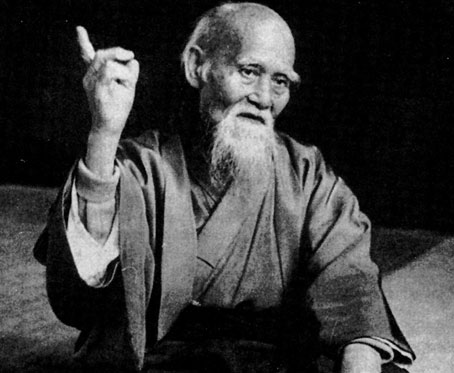
My sincere hope is that this post helps both new students, and experienced Aikidoka, understand a little more about what we do, and what we believe. We started Traditional Aikido of Colorado Springs to teach Morihei Ueshiba’s Aikido. We aren’t profit focused. The majority of Aikido dojos are not. We believe that both a well established lineage and an affiliation with a larger organization (e.g. the Aikikai, the Shin Shin Aiki Shuren Kai, the Ki Society) are important.
In our opinion, these elements are contributors to both the process of building a unified global Aikido community, and the ongoing maintenance of Aikido’s martial integrity. We also believe that solid training with a focus on developing a foundation is very important. We feel, as do other long term practitioners, that one of the biggest contributors to the recent perception that Aikido is a dying art, is the dilution of technical expertise. The way we counter this dilution is by doing our best to walk the path that Morihiro Saito Sensei walked. I feel this is the best path, for me, and my students, to an understanding of O-Sensei’s teachings.
Tolerance: Sympathy or indulgence for beliefs or practices differing or conflicting with one’s own.
The Merriam-Webster Dictionary
I’ve provided some background on our teaching methods and our motivations. While I would never pretend to speak for the entire Iwama-Ryu community, I can speak for myself. I’ve studied under exponents of every major style of Aikido. There is absolutely room in the community for stylistic differences. I believe there are many paths to understanding O-Sensei’s teachings. I believe that the existence of multiple Aikido styles is reflective of both basic human nature and the amazing human capacity for innovation. Speaking from my personal experience as a practicing Electrical Engineer, true innovation, with rare exception, only happens in a framework that includes both experience and a strong foundation. I believe this is true for anything worth practicing… Aikido included…
Our Dojo’s Path
This post is about OUR chosen path. We believe that the best path for OUR dojo is via the legacy that Morihiro Saito Sensei left behind. One of our goals is to build a strong community, along the Front Range, focused both on the study of Traditional Aikido and the transmission of Saito Sensei’s legacy. Our strong lineage supports this goal. Preservation of O-Sensei’s techniques is important to us. We believe that affiliation with both the CAA (our parent organization) and the largest global Aikido organization, the Aikikai Foundation, is important. The Aikikai recognizes many styles of Aikido, and we could not be more supportive of alternative paths to O-Sensei.
We also believe, as O-Sensei did, that a strong focus on fundamentals is what builds technically proficient Aikido students. Aikido is a martial art, and martial integrity is important to us. We are comfortable with our views. Frankly, if you are espousing “tolerance”, you should celebrate the diversity that an Iwama Style Aikido dojo brings to the Aikido community.
We warmly welcome anyone to come train with us, anytime. Our dojo is open to all friendly people that want to learn Iwama Style Aikido. We certainly recognize the value of other paths to O-Sensei’s teachings. Our choice of path does not diminish the practices of others, nor are we anything other than supportive of other paths. However, we do hold our beliefs to be an important aspect of our practice, and we have every intention of doing our best to educate both new and experienced students on the aspects of Aikido that we think are important. Both new students and students of other styles of Aikido are welcome to come train Iwama Style Aikido with us any time!
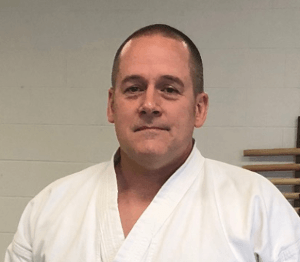
John Wiley
Dojo-cho/Chief Instructor
Traditional Aikido of Colorado Springs
Wiley Sensei (Sandan – Aikikai) started his Aikido career in the mid-1990s. Since early 2000, he’s been exclusively studying Iwama Aikido. He and his wife, Elizabeth, opened Traditional Aikido of Colorado Springs in early May 2018.
